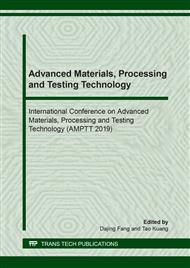p.175
p.182
p.188
p.195
p.203
p.210
p.216
p.223
p.229
Mechanical and Strain-Sensing Properties of Cement-Matrix Composite Containing Nano-Sized Carbon Black
Abstract:
An experimental researches was performed for carbon black-reinforced cement-matrix composites. The carbon black used was in the form of particles with a nano-size. Results show that when content of the carbon black is between 0.25% and 0.75% by weight of cement, both flexural and compressive strengths of the composite can be enhanced. Flexural strength increases up to 9.69%, and compressive strength increases up to 6.92%, respectively. Moreover, the carbon black-reinforced composite is of high strain-sensing ability. The fractional change in resistance () increases monotonically upon compressive loading, and decreases monotonically upon unloading. These properties indicate that the carbon black-reinforced composite can be used for structural function, while at the same time act as a strain sensor itself. Compared with carbon fiber-reinforced composites, the carbon black-reinforced composite has a low price and is easy for mixing.
Info:
Periodical:
Pages:
203-209
Citation:
Online since:
August 2019
Authors:
Price:
Сopyright:
© 2019 Trans Tech Publications Ltd. All Rights Reserved
Share:
Citation:


